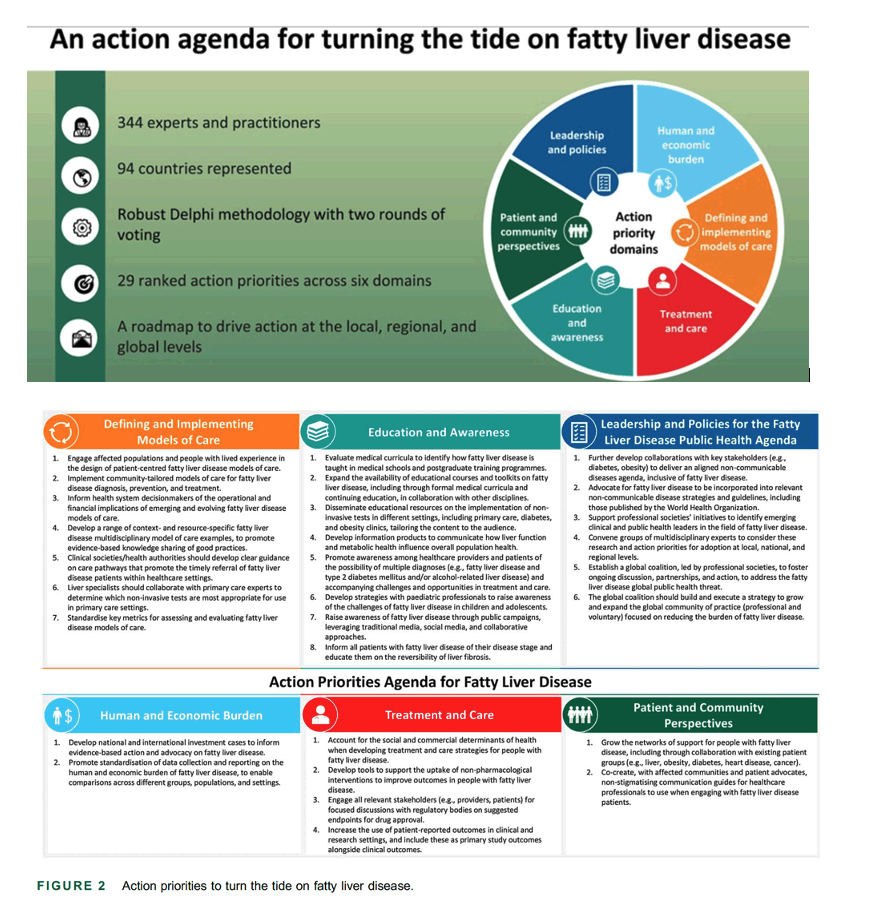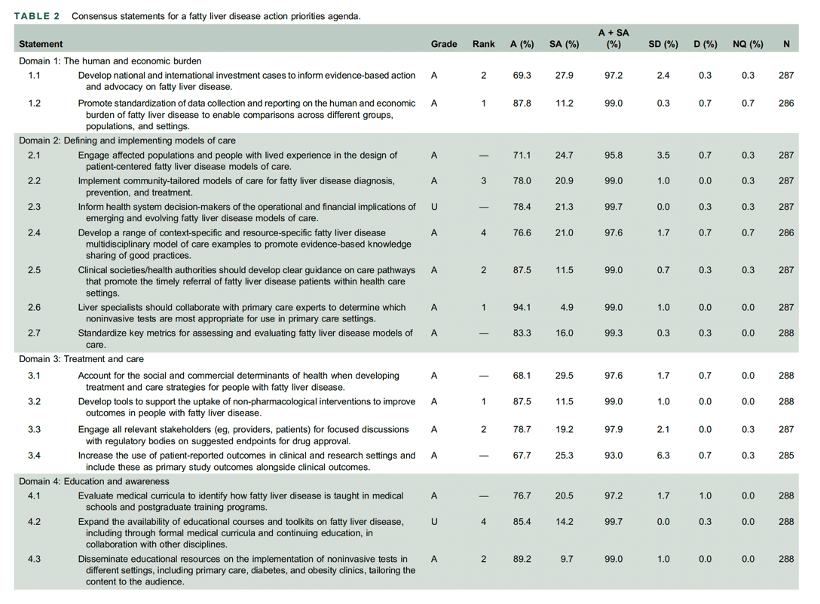| |
A global action agenda for turning the tide on fatty liver disease
|
| |
| |
Download the PDF here
Education and awareness
Available data on fatty liver disease awareness, while limited, illustrate low levels of public and patient awareness.38,42
Health care professionals and patients alike have reported a dearth of information about fatty liver disease and its management following diagnosis.43 Lack of awareness of the fibrosis stage is also emerging as being associated with lower adherence to lifestyle changes.44
Conclusions
This study presents the first global consensus-built action agenda on fatty liver disease. Through a rigorous Delphi process, a large panel identified 29 unique action priorities across 6 domains. Taken together, these actions set out the collective efforts needed to arrest this growing but under-addressed public threat in the coming years. Critically, implementing these actions will require a fundamental shift in the liver field from a narrow focus on hepatology to a more comprehensive approach that includes various stakeholders from different medical specializations, such as endocrinology, primary care, and cardiology, alongside public health experts, social scientists, policymakers and governments, pharmaceutical and device industries, patient advocates, and, most importantly, patients themselves.
Abstract
Background and Aims:
Fatty liver disease is a major public health threat due to its very high prevalence and related morbidity and mortality. Focused and dedicated interventions are urgently needed to target disease prevention, treatment, and care.
Approach and Results:
We developed an aligned, prioritized action agenda for the global fatty liver disease community of practice. Following a Delphi methodology over 2 rounds, a large panel (R1 n = 344, R2 n = 288) reviewed the action priorities using Qualtrics XM, indicating agreement using a 4-point Likert-scale and providing written feedback. Priorities were revised between rounds, and in R2, panelists also ranked the priorities within 6 domains: epidemiology, treatment and care, models of care, education and awareness, patient and community perspectives, and leadership and public health policy. The consensus fatty liver disease action agenda encompasses 29 priorities. In R2, the mean percentage of "agree" responses was 82.4%, with all individual priorities having at least a super-majority of agreement (> 66.7% "agree"). The highest-ranked action priorities included collaboration between liver specialists and primary care doctors on early diagnosis, action to address the needs of people living with multiple morbidities, and the incorporation of fatty liver disease into relevant non-communicable disease strategies and guidance.
Conclusions:
This consensus-driven multidisciplinary fatty liver disease action agenda developed by care providers, clinical researchers, and public health and policy experts provides a path to reduce the prevalence of fatty liver disease and improve health outcomes. To implement this agenda, concerted efforts will be needed at the global, regional, and national levels.


| |
| |
| |
|
|
|